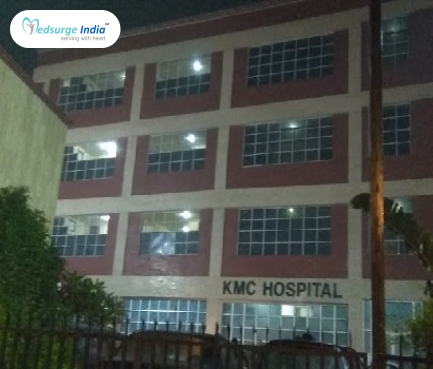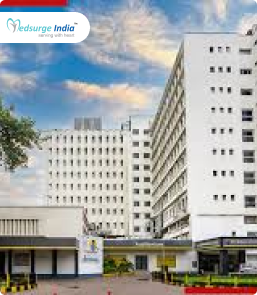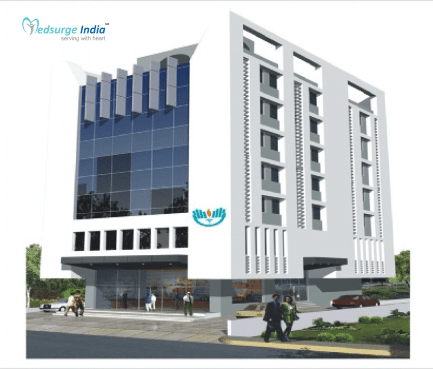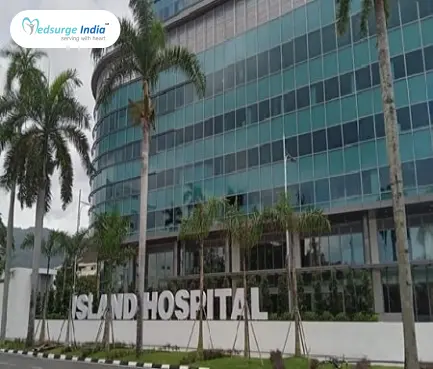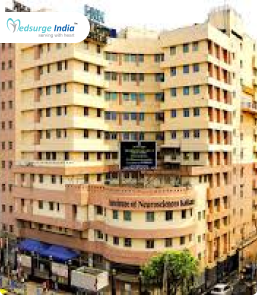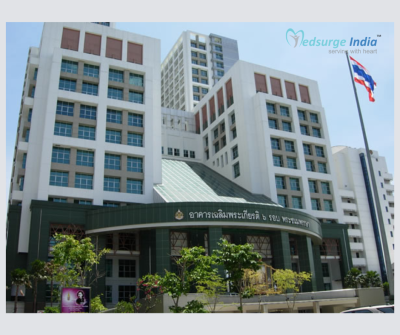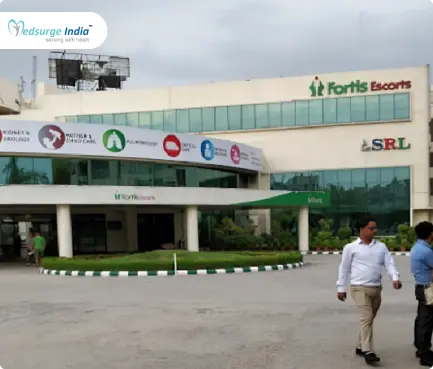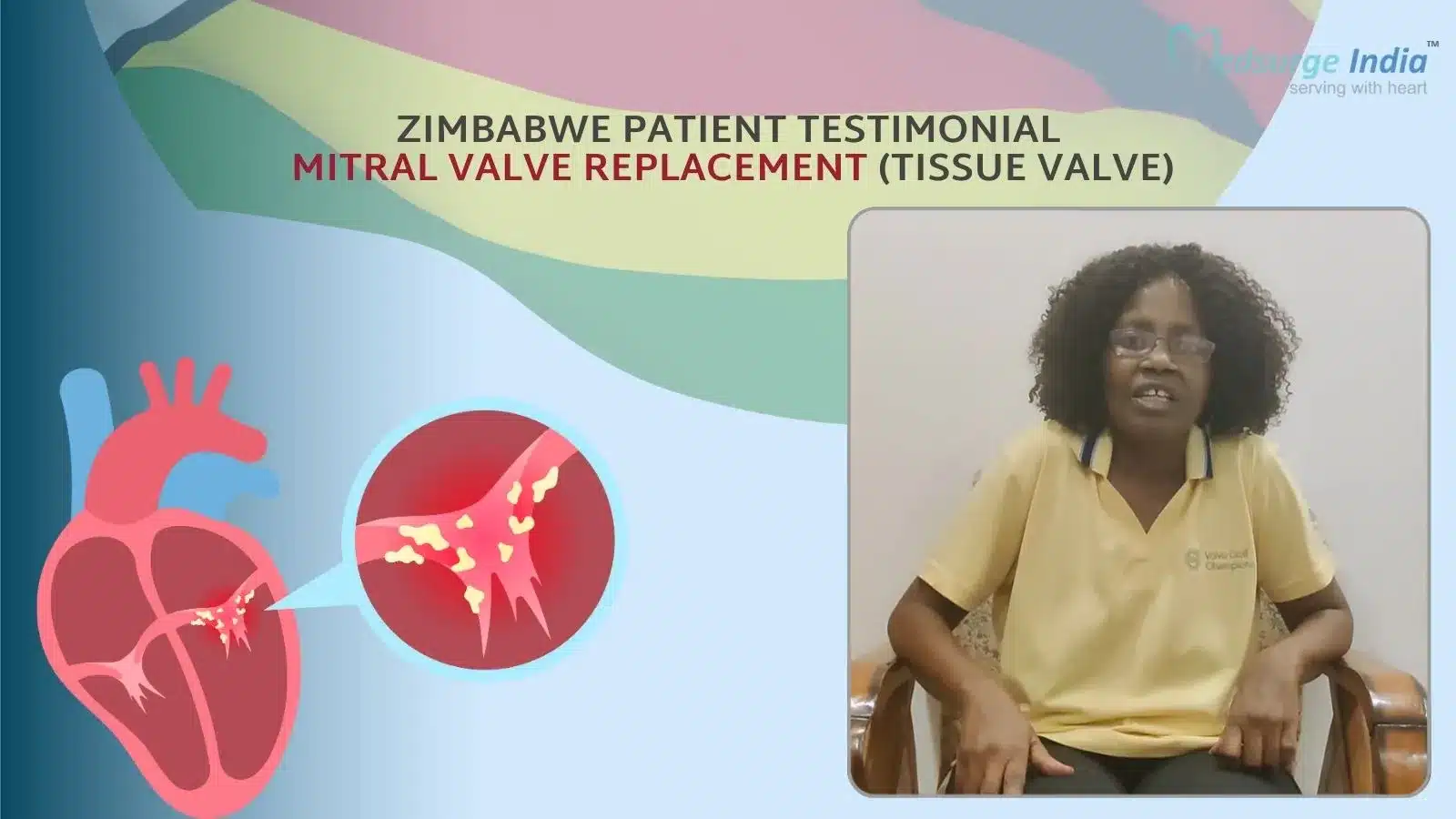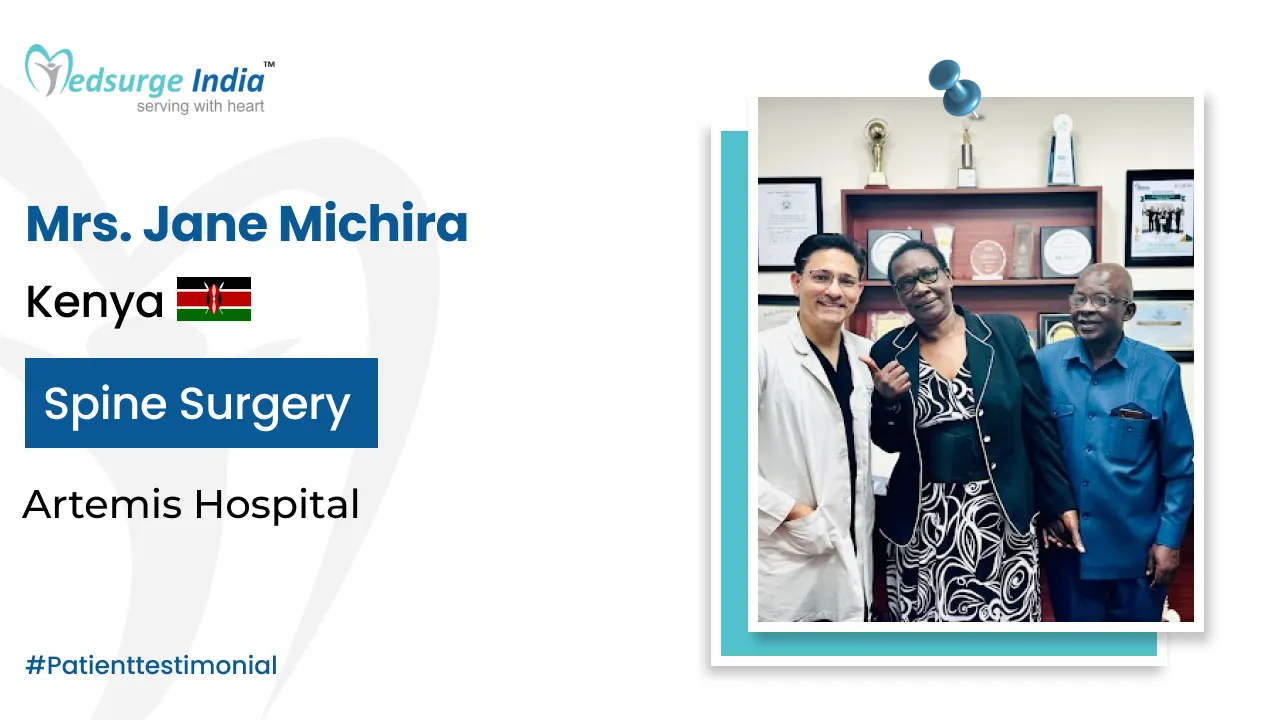
Cervical spine surgery is recommended for various issues affecting the neck region, including degenerative joint disease, traumatic injuries, or herniated discs that compress nerve roots. A range of surgical options, such as laminoplasty, cervical discectomy and fusion, disc replacement, and decompression surgery, are utilized to relieve symptoms like intense neck pain, muscle weakness, numbness, restricted mobility, and tingling sensations.
Here on this page, we will discuss the cost of cervical spine surgery in Turkey, the various factors that affect the cost of the surgery, how it is treated, and how Medsurge India can help you. Read to know more.
Cervical Spine Surgery Cost in Turkey
Cervical spine surgery costs in Turkey vary widely depending on the specific procedure, hospital, and surgeon. Expect to pay between 6000 USD and 25,000 USD for general cervical spine surgery, with some specialized procedures costing more.
Types of Procedure For Cervical Spine Surgery Cost in Turkey
- Anterior Cervical Discectomy and Fusion (ACDF): Starts from $5,000 to $8,000.
- Cervical Disc Replacement: Starts from $6,000 to $9,000.
- Laminectomy or Laminoplasty: Starts from $4,500 to $7,000.
- Posterior Cervical Fusion: Starts from $6,500 to $10,000.
Various Factors That Affect Cervical Spine Surgery Cost in Turkey
Cervical spine surgery in Turkey is recognized for its affordability compared to many Western nations; however, the overall cost can fluctuate significantly based on various factors.
- Type of Surgical Procedure: The cost is influenced by the specific cervical spine surgery needed. Each type of procedure utilizes different surgical methods, implants, and recovery plans, all of which affect the total expense.
- Hospital or Clinic Accreditation: Facilities accredited by international organizations such as JCI (Joint Commission International) or ISO typically have higher fees due to their elevated standards of care, advanced technology, and a broader array of patient services.
- Surgeon’s Experience and Reputation: Renowned neurosurgeons or orthopedic spine specialists with extensive experience or international training in complex surgeries may command higher professional fees.
- Technology and Equipment Used: Procedures that involve minimally invasive techniques or robotic assistance can incur higher costs due to the need for specialized equipment and advanced imaging technologies, such as intraoperative CT and neuromonitoring.
- Preoperative Diagnostics: The expenses for MRI, CT scans, blood tests, and neurological assessments prior to surgery may be included in the overall cost or billed separately, depending on the healthcare facility.
- Implants and Surgical Materials: The choice and brand of implants, such as titanium plates, cages, or artificial discs, can greatly influence the cost, with imported implants generally being more expensive.
- Length of Hospital Stay: Typical recovery requires a hospital stay of 1 to 5 days, depending on the procedure. Extended stays due to complications or additional health issues can raise the total cost.
- Postoperative Rehabilitation: Some patients may require physiotherapy or rehabilitation sessions after surgery, whether inpatient or outpatient, which can add to the overall expenses if not part of the initial package.
- Location of the Hospital: Facilities located in major cities like Istanbul, Ankara, and Izmir may have higher charges due to their urban setting.
Success Rate of Cervical Spine Surgery
The success rate of cervical spine surgery in Turkey is on par with that of Western nations, frequently surpassing 90%. This impressive rate can be attributed to a blend of skilled surgeons, cutting-edge technology, and thorough postoperative care. Patients can rely on the exceptional quality of treatment offered by our partner hospitals, with the support of Medsurge India.
Overview on Cervical Spine Surgery
Cervical spine surgery refers to surgical procedures aimed at addressing issues related to spinal instability (fusion surgery) or spinal cord compression (decompression surgery) in the neck region.
The cervical spine consists of seven vertebrae that function as shock-absorbing discs. If any of these discs deteriorate, it can lead to instability and pain. In some cases, surgeons may utilize spinal instrumentation, such as a small plate, to enhance the stability of the spinal structure.
Research indicates that approximately 90% of individuals experiencing cervical disc disorders tend to improve on their own over time with conservative and straightforward treatments. However, if these treatments are ineffective or if symptoms worsen, surgical intervention may become necessary.
Common Reason a Person May Require Cervical Spine Surgery
Surgery on the cervical spine may be advised to address various neck issues, including misalignment, nerve compression, and abnormalities of the spinal cord.
The primary indications for cervical spine surgery include:
– Removing bone or disc fragments that are causing nerve pain
– Fusing neighboring vertebrae to enhance stability
– Enlarging the spinal canal to alleviate spinal cord compression
– Exciting tumors or masses
– A combination of the above factors
The most frequently performed neck surgery is ACDF, which stands for anterior cervical discectomy and fusion. Surgical intervention is often needed at the C5-C6 and C6-C7 spinal motion segments in the neck.
Different Types of Treatment For Cervical Spine Surgery
Cervical spine surgery can vary based on the specific issues a patient is experiencing. Below are some frequently performed procedures:
Anterior Cervical Discectomy and Fusion
This surgery is designed to relieve pressure on the spinal nerves and cervical cord caused by disc herniation or other abnormalities in the cervical vertebrae. The procedure involves removing the damaged disc or bone, followed by fusing the adjacent vertebrae using implants or bone grafts.
Cervical Disc Replacement
In this procedure, the damaged or bulging disc between two vertebrae is removed and replaced with an artificial disc. This not only alleviates symptoms but also improves the range of motion in the cervical region.
Posterior Cervical Decompression
Performed through a posterior approach, this surgery aims to relieve pressure on the spinal cord and nerves. By removing bone, it creates additional space for nerves that were previously compressed due to abnormal bone growth or spinal stenosis.
Foraminotomy
Also known as foraminoplasty, this procedure involves enlarging the openings where nerve roots exit the spine. It alleviates pressure on the nerves, leading to significant long-term relief from symptoms.
Laminectomy
This procedure involves the removal of the lamina, the bony arch of the vertebra. By addressing the underlying cause of abnormal symptoms, laminectomy can reduce pain and numbness effectively.
Diagnostic Test Done Before the Surgery
The evaluation process for cervical spine surgery consists of the following steps:
1) Medical assessment: Your doctor will review your symptoms, medical history, and any prior treatments related to spinal issues.
2) Physical assessment: A thorough examination of your spine and adjacent areas will be conducted to assess your range of motion, strength, reflexes, and any indications of nerve compression.
3) Imaging studies: X-rays, MRIs, and CT scans will be utilized to examine the cervical spine’s structure and identify any abnormalities or damage to the discs.
4) Nerve assessments: Nerve conduction studies or Electromyography (EMG) may be performed to assess nerve function and detect any nerve-related issues.
5) Discography: In certain situations, a discography may be suggested to identify the specific discs responsible for pain by injecting contrast dye into the discs and monitoring their reaction.
Procedure for Cervical Spine Surgery
Here is a comprehensive outline of the cervical spine surgery procedure:
1) Anesthesia and incision: After completing the necessary pre-operative steps, the surgeon administers anesthesia, which may be general or localized. An incision is then created, either from the front or back, to gain access to the cervical vertebrae.
2) Accessing the spine: The surgeon meticulously displaces muscles and removes any bone or disc material to reach the targeted area of the cervical spine.
3) Decompression: This phase involves the removal of bone fragments, herniated disc material, or thickened tissues that are exerting pressure on the spinal cord or nerve roots.
4) Fusion (if necessary): In some instances, spinal fusion may be required to improve stability and prevent abnormal movement between the vertebrae. The surgeon may utilize bone grafts, metal implants, or rods to fuse the affected vertebrae, allowing for limited movement while ensuring stability.
5) Closure: The surgeon then sutures the incision and provides medications to help prevent infection.
6) Post-operative care: Effective post-operative care includes pain management, blood thinners, and physical therapy, all of which are crucial for a successful recovery.
Risk Factors Associated with Cervical Spine Surgery
Cervical spine surgery carries several potential risk factors, including:
Infection: Any open surgical procedure poses a risk of infection, making it crucial to administer appropriate medications to mitigate this risk.
Bleeding: There is a possibility of significant bleeding or the formation of a hematoma. In rare instances, the blood loss may be substantial enough to necessitate a blood transfusion.
Nerve Injury: Given that the cervical spine houses vital nerves, there is a risk of nerve damage, which could result in weakness, numbness, pain, or even paralysis.
Pain and Discomfort: Post-operative pain and discomfort are common following cervical spine surgery, but these symptoms can typically be alleviated with pain relief medications.
Anesthesia Risks: The administration of anesthesia involves certain risks, including allergic reactions, respiratory issues, or negative effects on cardiac function.
Also Read:- Cervical Spine Surgery Cost in India
How Can Medsurge India Assist You?
Medsurge India is a medical tourism company based in India, recognized for offering top-notch treatment to patients worldwide. We partner with leading hospitals and a diverse range of specialists, facilitating seamless connections between patients and their respective doctors. If you or your loved ones are considering cervical spine surgery in Turkey, feel free to reach out to us for more information regarding the procedure and associated costs.
Get Free Cost Estimation
The Most Important Frequently Asked Questions
Q: What is the duration of cervical disc replacement procedures?
A: Some manufacturers assert that these devices can last approximately 40 years. Unlike spinal fusion, which restricts movement by joining two adjacent vertebrae, an artificial disc replacement maintains motion similar to that of a healthy spinal disc.
Q: Is cervical disc replacement surgery safe?
A: Similar to anterior cervical discectomy and fusion, cervical artificial disc replacement is generally considered safe. Various clinical studies indicate that the complication rate for anterior cervical discectomy and fusion is higher compared to that of cervical artificial disc replacement.
Q: Can the body reject a replacement disc?
A: An improperly performed cervical disc replacement can lead to complications such as paralysis, tingling, numbness, and neck pain, along with a limited range of motion. If a cervical disc replacement is unsuccessful, many symptoms associated with the degenerated natural disc may reappear.
Q: Can a cervical disc be replaced multiple times?
A: While three-level cervical disc replacements are less common, two-level replacements are more frequently performed. However, when executed correctly, the procedure minimizes the need for revision surgeries and offers long-lasting pain relief.
Q: Is there an age restriction for disc replacement surgery?
A: Patients aged 18 to 60 with degenerative disc disease at one or both levels of the spine, who have not seen improvement after at least six months of non-surgical treatment, may be candidates for artificial disc replacement.
Top Hospitals for Cervical Spine Surgery in Turkey
Top Doctors for Spine Surgery
Dr. Emre Acaroglu
Consultant , Graduation, Fellowship, Fellowship
Experience: 33 years of experience
Acibadem Hospitals Group
Ankara, Turkey
Assoc. Prof. Mehmet Cetinkaya
Consultant
Experience: 12 years of experience
Istinye University Medical Park Gaziosmanpasa Hospital, Turkey
Istanbul, Turkey
Assoc. Prof. Dr. Halil Burc
Associate Professor
Experience: 21 years of experience
Hisar Hospital Intercontinental, Istanbul
Istanbul, Tur,key
Op. Dr. Mehmet Aydogan
Consultant
Experience: 20 years of experience
Emsey Hospital, Pendik
Istanbul, Turkey
Dr. Abdulaziz Temiz
Consultant
Experience: 12 years of experience
Turan & Turan Health Center
Bursa, Turkey
Dr. Ahmet Alanay
Senior Consultant
Experience: 24 years of experience
Acibadem Hospitals Group, Turkey
Istanbul, Turkey
Prof. Dr. Azmi HAMZAOĞLU
Professor
Experience: 36 years of experience
Florence Nightingale Hospital, İstanbul
Istanbul, Turkey
Dr. Mehmet Aydogan
Consultant , Graduation, Fellowship
Experience: 21 years of experience
Istanbul , Turkey


